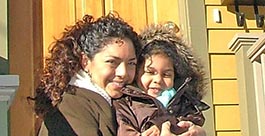The numbers are counted, tabulated and recorded: In its first year, the Community Investment Tax Credit (CITC) is a clear financial success for CDCs, the Commonwealth and, most importantly, Massachusetts residents. As individuals, families, businesses and nonprofits from the outer beaches of the Cape to the rolling hills of the Berkshires learned about this new program, CDCs began to use the tax credit not simply to invite their historical supporters to increase their giving, but also welcomed hundreds of new donors to support their work. The Community Investment Tax Credit gathered speed through the second half of 2014, and concluded by generating $2.7 million from new donors. Overall, $4,709,998 was raised last year through the program. Critically, for every taxpayer dollar allocated toward the program, the Commonwealth realized $2.00 in community-directed donations, including $1.43 in totally new funding not previously available. While these are perhaps the biggest fundraising successes recorded for the first year of the CITC program, the details yield even more positive results worth sharing.
At first, MACDC staff were most concerned that CDCs with rural service areas would be the hardest pressed to execute effective fundraising strategies. After all, if the towns in which you work have no large corporations or foundations and just a few thousand people, it can be hard to raise money. But we were thrilled to be wrong. Hilltown CDC, for example, which has a service area sandwiched between the Pioneer Valley and the Berkshires had several donors step up to make contributions of $1,000 or more whereas in the past they had only donated a few hundred dollars. CDCs on the Cape and Martha’s Vineyard found incredible success too by reaching out to members of their community, even seasonal residents. This is not to overshadow the incredible fundraising efforts from CDCs in Boston and the Gateway cities, but the expectation, at first, was that urban communities, given the greater density of individuals, families and businesses, would find it easier to roll out a new fundraising initiative.
Patterns of how CDCs issued their credits are hard to identify as individuals, families, banks, businesses and nonprofits all participated. While one CDC had one donor consume all their credits and another had a handful of foundations use the tax credit to increase their grants, most CDCs found a balanced mix of individuals, financial institutions and local businesses, as 65% of all funds raised came from these two taxpayer categories. Sixty-seven percent of all new donations came from individuals and families, which raised 47% of all new revenue generated through the program in 2014. The average donation from individuals and families was $3,189.37. Of the 1,014 donations made last year, 610 were from individuals and families. With this fundraising success, the CITC is achieving one of its fundamental goals of measurably diversifying the overall funding base of CDCs.
Additional highlights of the CITC program’s first year include the United Way of Massachusetts Bay and Merrimack Valley raising 23% of the total raised in 2014 or close to $1.1 million. We also estimate $250,000 came during the last week in December and that most donors made their donation in the 4th quarter of the year. This isn’t unusual, but it’s new to CDCs who are accustomed to budgeting their fundraising activities upon a grant and service contract schedule.
Notwithstanding all of this success, there is room for improvement. Not surprisingly, as a new program, the CITC got off to a slow start during the first half of 2014 and most donations did not arrive until the final quarter. A total of 79% of the credits available in 2014 were consumed. While these credits carry over to 2015, it means that CDCs will need to increase their collective fundraising by more than 200% in 2015.
If we were to draw a conclusion from the fundraising numbers for the first year, it would be that the tax credit is working and CDCs are stepping up to the opportunity that it brings. The public/private partnership model inherent in the CITC is poised to lift up new opportunities for neighborhoods and families across the Commonwealth.
| Taxpayer Type | # of donations | % of donations | $ donated | % of Total raised | % of $ from new donors |
|---|---|---|---|---|---|
| Construction | 47 | 5% | $220,240 | 5% | 3% |
| Accounting Services | 23 | 2% | $61,200 | 1% | 1% |
|
Transportation /Communicat./Utilit. |
3 | 0% | $19,000 | 0% | 0% |
| Wholesale/Retail Trade | 20 | 2% | $99,500 | 2% | 1% |
| Finance Institution | 89 | 9% | $1,092,650 | 23% | 14% |
| Insurance/Real Estate | 41 | 4% | $158,000 | 3% | 2% |
| Business Services | 22 | 2% | $40,190 | 1% | 0% |
| Health Services | 8 | 1% | $24,741 | 1% | 0% |
| Legal Services | 24 | 2% | $64,950 | 1% | 1% |
| Education Services | 3 | 0% | $8,000 | 0% | 0% |
| Individuals | 610 | 60% | $1,945,518 | 41% | 27% |
| Other | 124 | 12% | $976,009 | 21% | 8% |
| Total | 1014 | 100% | $4,709,998 | 100% | 58% |









